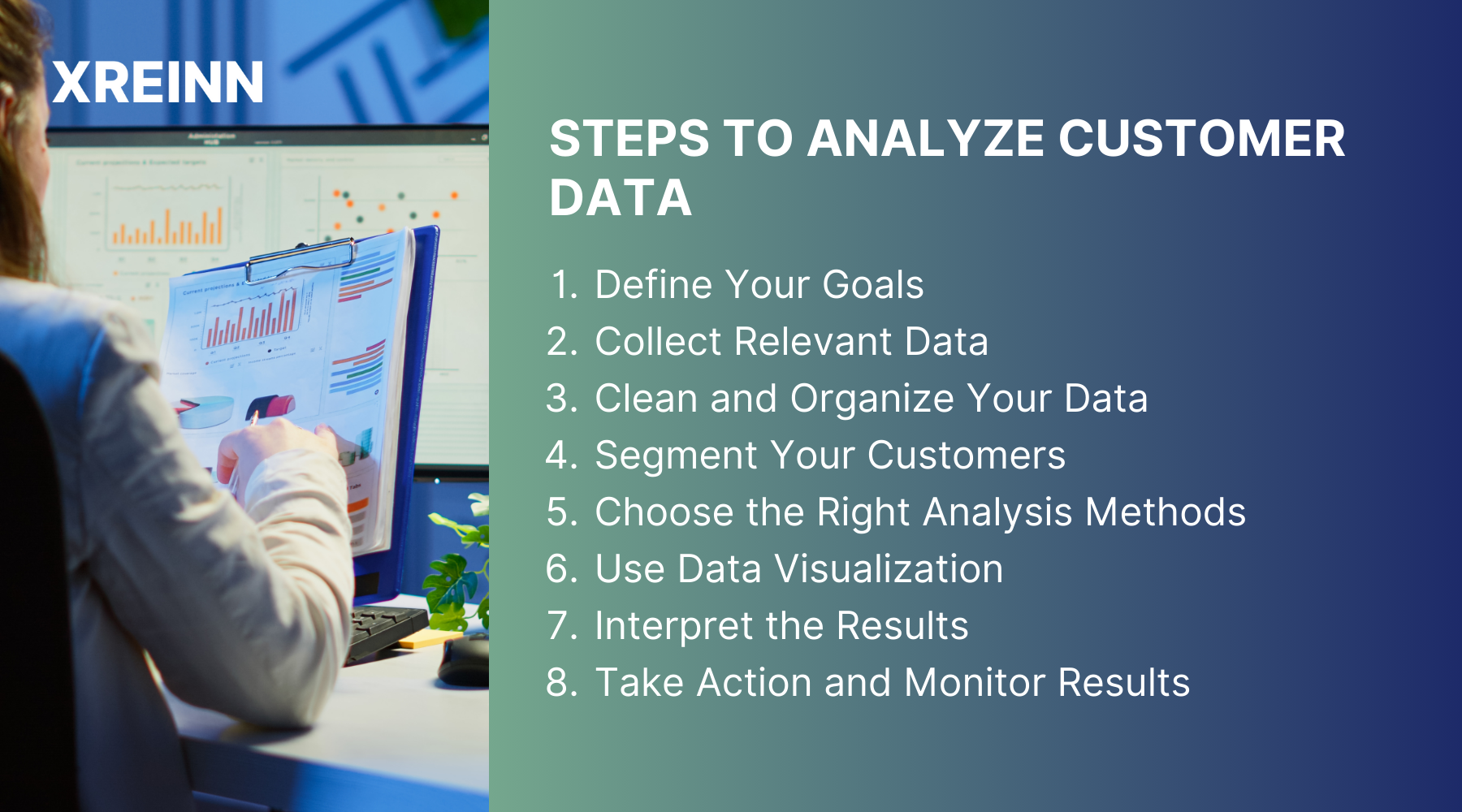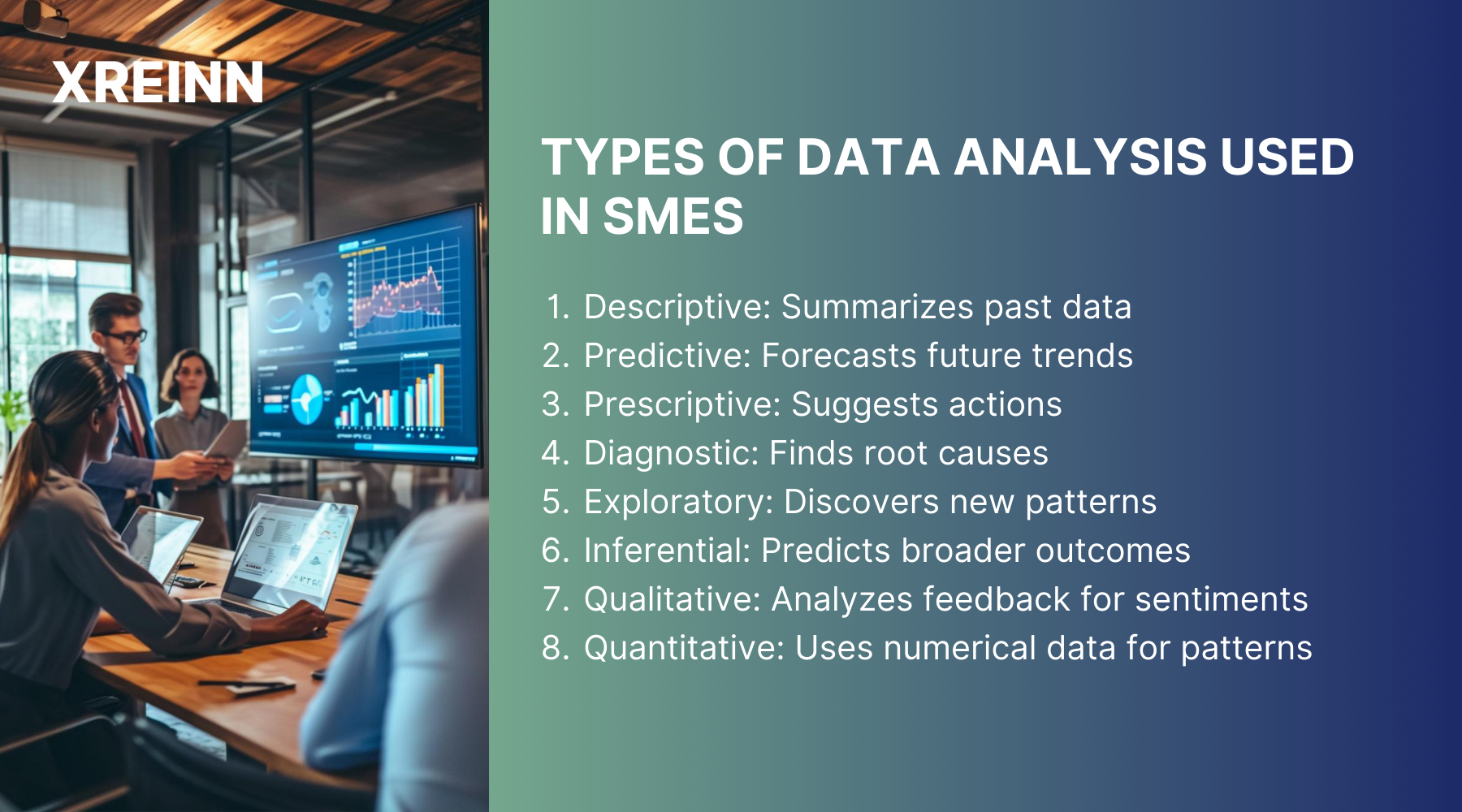Data Analytics
Customer Data Analysis – How to Analyze Data in 8 Steps
Jul 06, 2024
Understanding your customers is essential for the growth of your business. By effectively analyzing your customer data, you can make smarter decisions, improve your marketing strategies, and ultimately boost your revenue. Imagine having the ability to predict what your customers want before they even ask for it. With the right approach to data analysis, this isn't just a possibility – it's a reality. But how exactly do you go about analyzing customer data to achieve these insights?
This article will guide you through a straightforward, eight-step process to master customer data analysis.
What is Customer Data Analysis?
Customer data analysis involves collecting and examining data about your customers to gain insights into their behavior, preferences, and needs. By understanding these aspects, you can customize your products, services, and marketing efforts to better meet your customers' expectations. This process not only helps in retaining existing customers but also attracts new ones by providing a personalized experience.
Steps to Analyze Customer Data

1. Define Your Goals
Before diving into data analysis, you need to know what you want to achieve. Are you looking to increase customer retention, improve your product offerings, or improve your marketing strategies? Clearly defining your goals will help you focus on the right data and avoid wasting time on irrelevant information. For example, if your goal is to improve customer retention, you might focus on analyzing customer satisfaction surveys and churn rates.
2. Collect Relevant Data
Once you have your goals in place, the next step is to gather data. This can include demographic information, purchase history, website interactions, social media activity, and customer feedback. Make sure to use reliable sources and tools to collect accurate data. The more comprehensive your data, the better insights you'll gain. For instance, combining data from various sources can give you a more holistic view of your customer's journey.
3. Clean and Organize Your Data
Raw data can be messy and overwhelming. To make sense of it, you need to clean and organize it. Remove any duplicates, correct errors, and fill in missing values. Organize your data in a way that makes it easy to analyze, such as using spreadsheets or data management software. This step ensures that your analysis will be based on accurate and reliable data.
4. Segment The Data
Not all customers are the same. Segmenting your customers into groups based on certain criteria like age, location, purchasing behavior, or engagement level can provide more targeted insights. This step is crucial for understanding the different needs and preferences of each segment, allowing you to tailor your strategies accordingly. For example, younger customers might prefer different marketing channels compared to older customers.
5. Choose the Right Analysis Methods
There are various analysis methods you can use to analyze customer data, including descriptive analysis, predictive analysis, and prescriptive analysis. Descriptive analysis helps you understand what has happened, predictive analysis forecasts future trends, and prescriptive analysis suggests actions to achieve desired outcomes. Choose the method that best suits your goals and the nature of your data. For instance, if you're looking to forecast future sales, predictive analysis would be the most appropriate method.
6. Use Data Visualization
Data visualization tools like charts, graphs, and dashboards can help you see patterns and trends more clearly. Visualizing your data makes it easier to interpret and communicate your findings to others. It also helps in identifying outliers and anomalies that might require further investigation. For example, a spike in sales during a specific period might indicate the success of a particular marketing campaign.
7. Interpret the Results
Once you have your analysis, it's time to interpret the results. Look for trends, correlations, and insights that can help you achieve your goals. Ask yourself questions like: What are the key drivers of customer satisfaction? Which products are most popular among different customer segments? What factors contribute to customer churn? This step is about making sense of the data and turning it into actionable insights.
8. Take Action and Monitor Results
The final step is to take action based on your findings. Implement changes to your products, services, or marketing strategies and monitor the results. Use key performance indicators (KPIs) to track your progress and adjust your approach as needed. Continuous monitoring and analysis will help you stay on top of customer trends and make informed decisions. For example, if a new marketing strategy leads to increased sales, you can replicate and scale it.
Types of Data Analysis Used in SMEs

Descriptive Analysis
Descriptive analysis helps you understand the current state of your business by summarizing historical data. This type of analysis answers questions like "What happened?" and "How many?" For example, you can analyze sales data to determine which products were most popular during a specific period.
Predictive Analysis
Predictive analysis uses statistical models and machine learning techniques to forecast future trends. By analyzing historical data, you can predict customer behavior, sales trends, and potential risks. This type of analysis helps you make proactive decisions and plan for the future.
Prescriptive Analysis
Prescriptive analysis goes a step further by suggesting specific actions to achieve desired outcomes. This type of analysis considers various scenarios and provides recommendations based on data-driven insights. For instance, if your goal is to increase customer retention, prescriptive analysis can suggest personalized marketing campaigns to target at-risk customers.
Diagnostic Analysis
Diagnostic analysis helps you understand the reasons behind certain outcomes. By examining data and identifying patterns, you can determine the root causes of issues like declining sales or low customer satisfaction. This type of analysis is essential for addressing problems and improving your business operations.
Exploratory Analysis
Exploratory analysis is used to discover new insights and identify patterns that you might not have been aware of. This type of analysis involves examining data without a specific hypothesis in mind, allowing you to uncover hidden trends and opportunities.
Inferential Analysis
Inferential analysis involves making predictions or inferences about a larger population based on a sample of data. This type of analysis is useful when you need to generalize findings from a small group to a broader audience. For example, you can conduct surveys with a sample of customers and use the results to infer the preferences of your entire customer base.
Qualitative Analysis
Qualitative analysis focuses on non-numerical data, such as customer feedback, reviews, and social media comments. This type of analysis helps you understand the sentiments and opinions of your customers. By analyzing qualitative data, you can gain insights into customer satisfaction, preferences, and areas for improvement.
Quantitative Analysis
Quantitative analysis involves analyzing numerical data to identify patterns and trends. This type of analysis is essential for measuring performance, identifying correlations, and making data-driven decisions. For example, you can analyze sales figures to determine the effectiveness of a marketing campaign.
Conclusion
Customer data analysis is a powerful tool that can help you understand your customers better and make informed business decisions. By following these eight steps – defining your goals, collecting relevant data, cleaning and organizing your data, segmenting your customers, choosing the right analysis methods, using data visualization, interpreting the results, and taking action – you can uncover valuable insights and drive your business forward.
Remember, the key to successful data analysis is to stay focused on your goals, use reliable data sources, and continuously monitor and adjust your strategies based on your findings. So, start analyzing your customer data today and take your business to the next level.

Data Analytics
Jun 27, 2024Master key concepts in data analytics with practical tips to enhance decision-making and achieve success in your projects and professional growth

Data Analytics
Jul 01, 2024Learn the essential stages of the data analytics workflow to turn your data into valuable business insights and drive growth.

